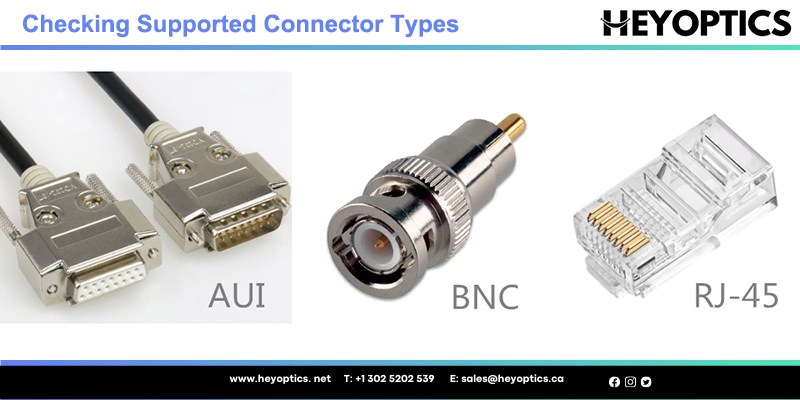How to Choose a Network Interface Card?
Network interface cards, which are also called NIC cards or fiber LAN cards. Nowadays, there are a variety of network interface cards in the market. Various network interface cards differ in transmission rate, prices, and other aspects. And using different network interface cards may get different network performance. So choosing different network interface cards is important. This post will give you some tips on choosing a network interface card, which is likely to help you to choose the most suitable one.
Types of Network Interface Card
The bus interface type of the network card can be generally divided into ISA interface network cards, PCI interface network cards, PCI-X bus interface network cards, and PCIe network cards. Based on a different interface, it can be grouped into Ethernet RJ-45 interface network cards, BNC interface network cards, AUI interface network cards, FDDI interface network cards, and ATM interface network cards. In terms of transmission speed, there are gigabit network cards, 10G fiber network cards, 25G fiber network cards, and 40G fiber network cards. As you can see, there are many types of network interface cards. So how can we choose different types of network interface cards? Some tips will be given in the following part.
Tips on Choosing a Suitable Network Interface Card
In the following part, some useful suggestions about selecting different types of network interface cards will be elaborated on in detail.
Checking Supported Connector Types
Due to different network transmission media, common network interface cards have three different connector types. some network interface cards provide two ports on one card at the same time, and some network interface cards also provide three ports on the card at the same time. These ports are the AUI port, BNC port, an RJ-45 port. The AUI connector is often used with the thick coaxial cable, the BNC connector IS often used with a thin coaxial cable and the RJ-45 port connector is often used with the unshielded twisted pair. Many small local area networks use a thin coaxial cable and a bus network with a BNC connector. The cost of this connector is low, but it is not easy to manage, especially for a large local area network. So you need to choose different types of network interfaces card according to different supported connectors.

Determine transfer rate
Taking Ethernet network cards as an example, there are 10Mbps, 10/100Mbps, 1000Mbps, and even 10Gbps network cards on the market. Generally speaking, people tend to think that a network card with a higher transfer rate is a better network card. but it is not the truth. For example, if your computer is plugged into a 1000Mbps network card and connected with a 100Mbps twisted pair cable, the maximum transfer rate can only reach 100Mbps, so using this type of network card is a waste. To avoid unnecessary waste, care should be taken when choosing network interfaces with different transmission rates.
Considering Prices and Brands
The prices of network interface cards in different brands are various. But there are some well-known brands, such as Intel, Netgear, Mellanox, FSand so on. Those brands are popular with customers because their products have good quality and perfect network performance, which is more likely to meet your requirements for network interface cards. Since the prices of different interface cards are affected by many factors, such as transmission rate, different ports, and so on. When you compare different network interface cards, you should not only consider the prices, but also you need to take each parameter of network cards in different companies into consideration, then make a wise choice.
Paying Attention to the Bus Type
PCI, PCI-X, or PCI-E bus intelligent cards are commonly used by servers and workstations. And the ISA connector no longer supports the PC. So when you purchase a network card for your PC, what you should choose is PCI-X and PCI-E or PCI card instead of the outdated ISA network card. And the PCIe network interface cards are now widely used by customers.
Compatibility of Operating System
If you want to buy a network interface card, you need to consider which network interface can support your operating system. In general, most network interface cards can support Microsoft® Windows®, but not every interface card will support Linux or Apple’s Mac OS X. So you need to make sure that the network interface is compatible with the operating system that you are using.
Conclusion
As is known to all, the performance of network card has a great impact on network performance and the data transmission rate of the entire network. With the tips mentioned above, we hope this article gives you some inspiration for choosing the right network interface card.
Previous
What is the Access Switch?



